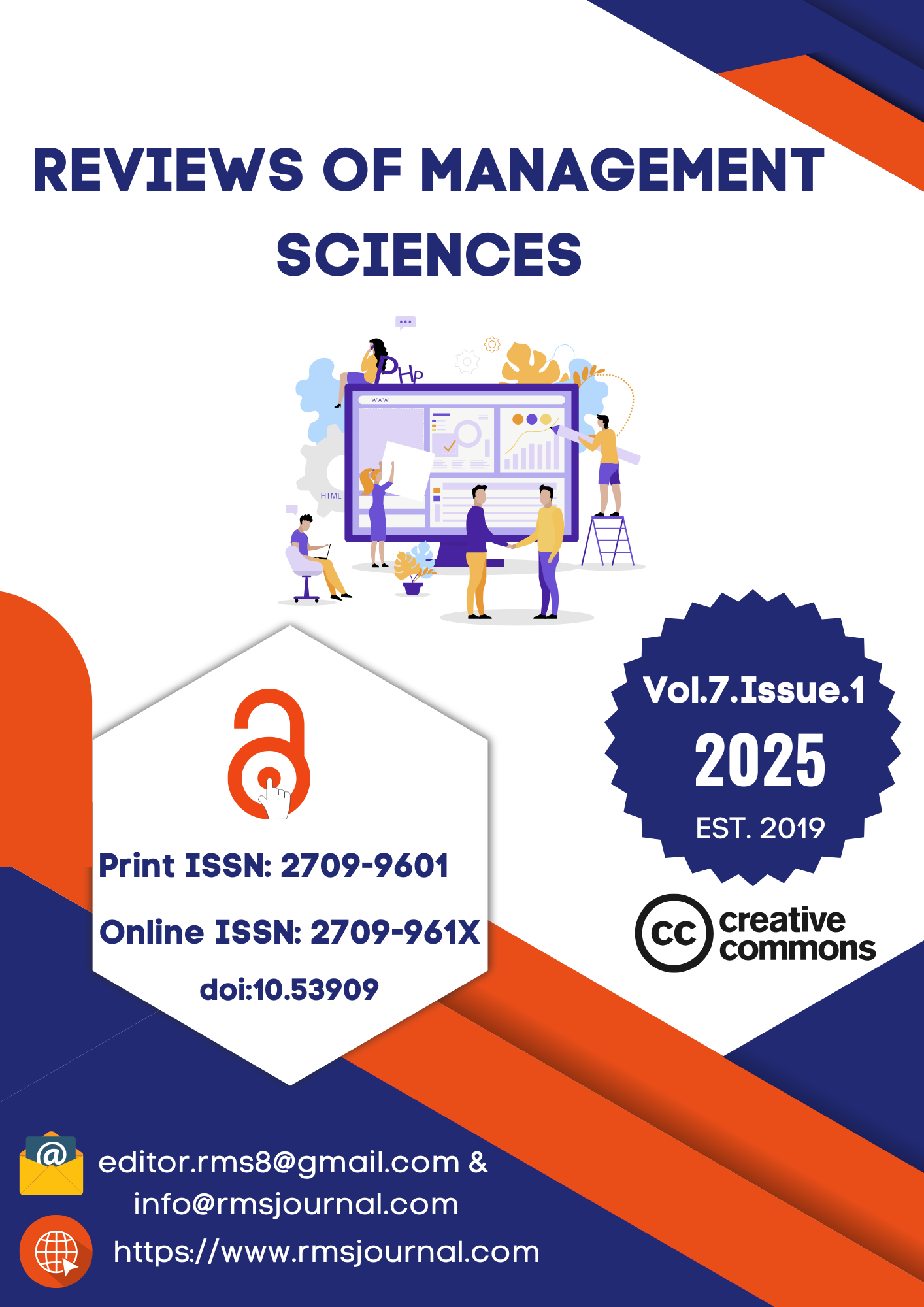Blockchain Integration in Islamic Finance: A New Era for Banking Sector in Pakistan
DOI:
https://doi.org/10.53909/rms.07.01.0244Keywords:
Blockchain ,, Islamic Banking, Traceability, Transparency, GovernanceAbstract
Purpose
This study explores the integration of Blockchain technology within Islamic banks in Pakistan.
Methodology
Using a cross-sectional survey approach, data was collected from 500 participants, using a five-point Likert scale adopted questionnaire. Participants include banking professionals, Blockchain freelancers, technology experts, and academics. The analysis was conducted using Partial Least Squares Structural Equation Modeling (PLS-SEM).
Findings
The results reveal that Blockchain technology adoption significantly improves the sustainable performance of Islamic Banking in Pakistan. The most transformative feature of Blockchain technology, i.e., transparency, governance, and traceability, has a significant positive impact on sustainable performance. Whereas the mediation analyses show that traceability and governance partially mediate the relationship between Blockchain technology and Islamic banking performance. Results further reveal that Blockchain technology demonstrates strong potential to enhance transaction efficiency, reduce operational costs, and improve security, all while ensuring compliance with Shariah Law.
Conclusion
The study concludes that implementing Blockchain technology can substantially enhance the sustainable performance of Islamic banking in Pakistan. The study incisively demonstrates the key reasons and implications for employing Blockchain technology in the Islamic banking sector. The findings thereof can be applied as an insightful manual for policymakers and industry experts to better understand, promote, and support the adoption of Blockchain technology in Islamic Banking institutions
Downloads
Downloads
Published
How to Cite
Issue
Section
License
Copyright (c) 2025 Authors retain copyright to the content of the articles. Open access articles can be published under the Creative Commons Attribution (CC BY) 4.0

This work is licensed under a Creative Commons Attribution 4.0 International License.
The open-access articles in this journal are licensed under the terms of the Creative Commons licenses (CC BY 4.0).





